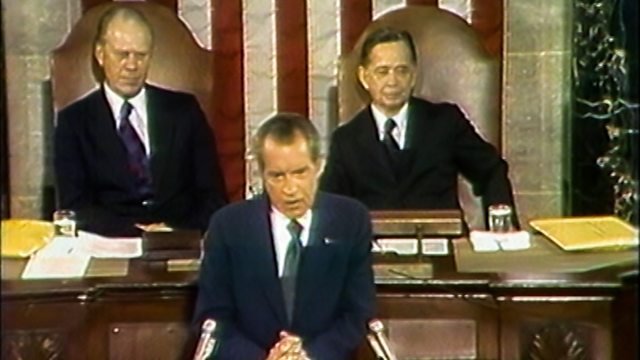Watergate episode 5: President Nixon clings on to the White House as the case against him mounts. The automatic recording system he ordered to be installed in the Oval Office, however, contains damning evidence.
Documentary series re-examining the Watergate Affair. The Watergate scandal was a major political scandal in the United States involving the administration of U.S. President Richard Nixon from 1972 to 1974 that led to Nixon’s resignation. The scandal stemmed from the Nixon administration’s continuous attempts to cover up its involvement in the June 17, 1972, break-in of the Democratic National Committee headquarters at the Washington, D.C. Watergate Office Building.
Watergate episode 5
The Watergate scandal was a major political scandal in the United States involving the administration of U.S. President Richard Nixon from 1972 to 1974 that led to Nixon’s resignation. The scandal stemmed from the Nixon administration’s continual attempts to cover up its involvement in the June 17, 1972 break-in of the Democratic National Committee headquarters at the Washington, D.C. Watergate Office Building. After the five perpetrators were arrested, the press and the U.S. Justice Department connected the cash found on them at the time to the Nixon re-election campaign committee.
Further investigations, along with revelations during subsequent trials of the burglars, led the U.S. House of Representatives to grant its judiciary committee additional investigation authority to probe into “certain matters within its jurisdiction”, and the U.S. Senate to create a special investigative committee. The resulting Senate Watergate hearings were broadcast “gavel-to-gavel” nationwide by PBS and aroused public interest. Witnesses testified that the president had approved plans to cover up administration involvement in the break-in, and that there was a voice-activated taping system in the Oval Office. Throughout the investigation, the administration resisted its probes, which led to a constitutional crisis.
Several major revelations and egregious presidential action against the investigation later in 1973 prompted the House to commence an impeachment process against Nixon. The U.S. Supreme Court ruled that Nixon had to release the Oval Office tapes to government investigators. The tapes revealed that Nixon had conspired to cover up activities that took place after the break-in and had attempted to use federal officials to deflect the investigation.
The House Judiciary Committee then approved articles of impeachment against Nixon for obstruction of justice, abuse of power, and contempt of Congress. With his complicity in the cover-up made public and his political support completely eroded, Nixon resigned from office on August 9, 1974. It is believed that, if he had not done so, he would have been impeached by the House and removed from office by a trial in the Senate. He is the only U.S. president to have resigned from office. On September 8, 1974, Nixon’s successor, Gerald Ford, pardoned him.




